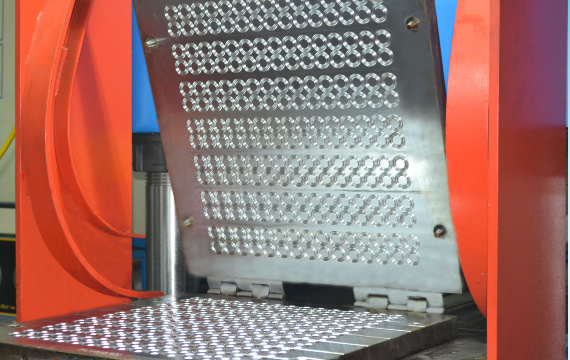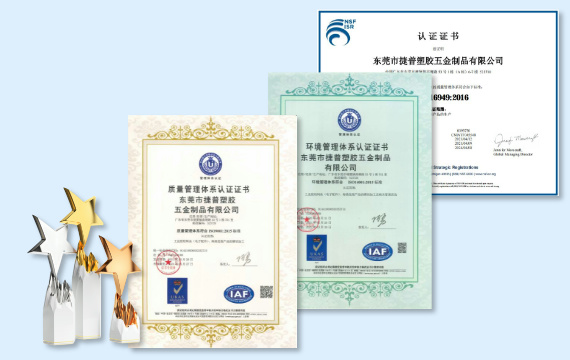Yout Best Die Cut Rubber Gaskets Manufacturer
- Custom Die Cut Rubber Gaskets – Tailored to your exact size, shape, and design.
- High-Quality Rubber Materials – Excellent durability, flexibility, and sealing performance.
- Fast Sample Production – Get precision Die Cut Rubber Gaskets in just 3 days.
- ISO9001 & ISO14001 Certified – Reliable manufacturing with strict quality control.
- Product Details
- Application Overview
- Material Insights
-
Die-cut rubber gaskets are precisely cut to fit different shapes and sizes perfectly. They ensure a tight seal, preventing leaks in industrial and household applications. Die-cut rubber gaskets are widely used in automotive, aerospace, and electronic industries.
-
Various rubber materials are available, each designed for specific conditions and uses. EPDM is great for outdoor sealing due to its weather resistance. Die-cut rubber gaskets made from silicone can handle extreme temperatures in medical and food industries.
-
These gaskets offer durability, resisting wear, chemicals, and harsh environments. They are easy to install and reduce maintenance costs. Die-cut rubber gaskets are an efficient and cost-effective sealing solution.
Automotive Industry
Die-cut rubber gaskets seal engine parts, transmissions, and car doors, preventing leaks and dust. EPDM is great for weather resistance, while NBR works well with oil and fuel.
Aerospace Industry
These gaskets keep fuel and hydraulic systems sealed under extreme pressure and temperature. Silicone and NBR are commonly used for their durability and chemical resistance.
Industrial Equipment
Gaskets prevent leaks in pumps, valves, and bearings, ensuring smooth operation. Neoprene and NBR provide strong sealing and resistance to chemicals.
Electronics Industry
They protect devices from dust, moisture, and electromagnetic interference. Silicone is widely used for its flexibility and insulation properties.
Medical Equipment
Gaskets in medical devices prevent contamination and keep sensitive components safe. Silicone is preferred for its biocompatibility and heat resistance.
Construction Industry
They seal doors, windows, and pipelines, blocking air and water leaks. EPDM is ideal for outdoor use due to its UV and weather resistance.
Food Processing
Gaskets in food equipment ensure hygiene and prevent contamination. Silicone and EPDM meet food safety standards and resist high temperatures.
Oil & Gas Industry
Used in pipelines and valves, they prevent hazardous leaks in extreme conditions. NBR and Viton withstand harsh chemicals and high temperatures.
Jiepu, with years of die-cutting expertise, explains the key properties of rubber gaskets and why they perform well in various applications.
High Elasticity & Flexibility
Rubber molecules are naturally stretchy, allowing gaskets to bend, fit irregular surfaces, and create a tight seal.
Temperature Resistance
Different rubbers handle heat and cold differently. Silicone works from -60°C to 200°C, NBR from -40°C to 100°C, and Viton withstands up to 200°C, making them ideal for extreme conditions.
Chemical Resistance
Neoprene resists oils, Viton handles strong chemicals, and EPDM fights UV and ozone damage, ensuring durability in harsh environments.
Precision Cutting
Die-cutting ensures exact shapes and consistent quality, making rubber gaskets reliable for sealing complex parts.
Mechanical Strength
Rubber is tough yet flexible, resisting tearing and compression while maintaining a secure seal under pressure.
Environmental Adaptability
EPDM and Silicone are weather-resistant, making them perfect for outdoor and long-term applications.

Custom Die-Cutting Rubber Gaskets for Your Needs
At JIEPU, we specialise in Die-Cutting Rubber Gaskets tailored to your exact specifications. Whether for automotive electronics, security, or other industries, we provide precise cutting, high-quality rubber materials, and custom designs to ensure a perfect fit for your application.
With advanced technology and fast production, we offer cost-effective solutions and timely delivery, helping you enhance product performance and reduce costs. Contact us to learn how our custom die-cutting services can support your business!
Die-Cutting Rubber Gaskets Process
The die-cutting process for rubber gaskets starts with selecting the right rubber material, like Nitrile or Silicone, based on performance needs. A custom die is created, then the rubber is pressed and cut into the required shape using high-precision methods like flatbed or rotary cutting. This process ensures high-quality, custom-made rubber gaskets for various industrial applications.

Jiepu’s Controlled Environment for Rubber Gasket Cutting
At Jiepu, we create rubber gaskets in a clean, precise environment to ensure top quality. Our 1000-class cleanrooms reduce dust and contamination, while temperature and humidity are kept between 18°C~28°C and 40%~60% humidity to prevent material issues.
We use anti-static tools and keep equipment spotless to avoid defects. Materials are pre-conditioned for 24 hours, and staff wear protective gear to maintain cleanliness. This careful setup ensures every rubber gasket meets strict size, strength, and performance standards.
Jiepu’s Certified Precision in Rubber Gasket Die-Cutting
Jiepu delivers high-quality rubber gasket die-cutting services, backed by ISO 9001, ISO 14001, and IATF 16949 certifications. These ensure precision, eco-friendly practices, and compliance with automotive industry standards.
Our high-accuracy cutting and strict quality control guarantee reliable rubber gaskets for sealing and insulation. With custom solutions and sustainable production, Jiepu meets the needs of automotive, electronics, and industrial sectors.

Discover More for Your Die Cutting Projects
Quick & Easy: Rubber Gaskets Sample & Quotation Process
At Jiepu, we make the sample and quotation process for rubber gaskets simple and efficient. Here’s what to expect:
1. Sample Request Process
- Submit Your Request: Share the gasket name, size, quantity, and a 2D or 3D drawing with key details.
- Design Review: Our engineers check if the design is feasible and confirm material availability.
- Sample Production: We produce samples within 3 days, following your exact specifications.
- Quality Check: Each sample is inspected for precision, smooth edges, and no defects.
- Delivery: We ship the sample with relevant documents (e.g., material certificates, inspection reports) and provide tracking details within 24 hours.
2. Quotation Process
- Request a Quote: Send us your gasket details, including size, quantity, and expected delivery date.
- Cost Analysis: We calculate costs based on materials, tooling, processing, labour, and overheads.
- Quotation Submission: A detailed quote with volume-based pricing is provided within 24 hours.
3. Next Steps
- Sample Approval: Once you receive the sample, let us know if any adjustments are needed.
- Mass Production: After approval, we start production with strict quality checks.
- Delivery & Support: Finished products are packed and shipped with continuous customer support.
4. Key Considerations
- Material Selection: We prioritise high-quality, readily available materials.
- Accurate Drawings: Ensure clear dimensions to avoid production delays.
- Clear Communication: We keep you updated throughout the process.
With 20+ years of expertise, Jiepu ensures fast, precise, and reliable rubber gasket samples and quotations. Contact us today! 🚀
Jiepu Offers Die-Cutting Solutions For A Wide Range Of Rubber Gasket Materials. Here Are The Most Common Types:
- Natural Rubber (NR)
Good flexibility and wear resistance, but not resistant to oil or aging. Suitable for water pipes and agricultural equipment. - Nitrile Rubber (NBR)
Excellent oil resistance, making it ideal for car engines and hydraulic systems. Not great against ozone exposure. - Silicone Rubber (VMQ)
Handles extreme temperatures from -60°C to 200°C. Used in food processing, medical devices, and aerospace. - Fluoroelastomer (FKM)
Resists high temperatures and harsh chemicals. Common in aerospace, military, and chemical industries. - EPDM Rubber
Outstanding weather and water resistance. Often used in car seals, window gaskets, and cooling systems. - Neoprene (CR)
Resistant to oil, heat, and aging. Found in industrial machinery and electrical insulation. - Styrene-Butadiene Rubber (SBR)
Good wear resistance but weak against oil and aging. Suitable for basic industrial sealing applications. - Hydrogenated Nitrile Rubber (HNBR)
Stronger than NBR with better heat and wear resistance. Ideal for high-performance automotive and hydraulic applications. - Polyurethane (PU)
Highly wear-resistant with great mechanical strength. Used in mining and heavy machinery. - Thermoplastic Elastomer (TPE/TPO)
Combines rubber flexibility with plastic processability. Popular for car interiors and household appliances.
Each material has its strengths. Choose based on application, temperature, and budget.
Jiepu Provides Die-Cutting Services For Various Rubber Gaskets, Ensuring The Best Fit For Your Equipment.
- Check The Working Medium
Identify if the gasket will contact water, oil, chemicals, or air.
Use NBR for oil, FKM for chemicals, and EPDM for water. - Consider The Temperature Range
Ensure the gasket can handle your equipment’s temperature.
Use Silicone for high heat and NBR for low temperatures. - Evaluate The Pressure Conditions
Low pressure works with standard gaskets, while high pressure may need reinforced materials. - Match The Size And Shape
Choose the right dimensions to fit the sealing surface.
Ensure tight tolerances for a proper seal. - Check Durability And Lifespan
Outdoor use requires EPDM, while high-friction areas benefit from PU. - Meet Industry Standards
Food-grade applications need FDA-approved Silicone.
Automotive gaskets should comply with industry regulations. - Balance Cost And Performance
Expensive materials like FKM last longer and reduce replacement costs. - Consider Installation And Maintenance
Choose gaskets that are easy to install and replace.
Selecting the right gasket involves material, temperature, pressure, size, and cost. If unsure, consult a supplier for expert advice.
Die-cut rubber gaskets perform differently under high temperatures depending on the material used.
Silicone gaskets stay flexible and seal well between -60°C and 300°C. They are ideal for engines, ovens, and HVAC systems.
FKM gaskets handle -20°C to 200°C and resist heat and chemicals, making them suitable for high-temperature vacuum conditions.
EPDM gaskets work between -51°C and 150°C. They resist ageing and weather but are not good for oily environments.
NBR gaskets function from -40°C to 120°C and are great for high-temperature applications needing oil resistance.
Non-asbestos materials can withstand up to 510°C, making them useful for steam, fuel, and mild chemicals.
Flexible graphite gaskets perform well from -240°C to 510°C. They offer excellent heat resistance and chemical stability.
Special materials like THERMa-PUR® can endure extreme heat up to 1000°C, even in harsh chemical environments.
When selecting a die-cut rubber gasket, consider the working temperature, medium, and conditions. Jiepu offers precision die-cut solutions for various high-temperature applications.
Die-cut rubber gaskets help reduce vibration and protect equipment.
Natural rubber absorbs shock well but isn’t great for oil or heat.
Silicone rubber stays flexible in extreme temperatures and outdoor use.
NBR rubber resists oil and wear but has limited heat resistance.
EPDM rubber handles heat and moisture well, reducing noise and wear.
FKM rubber works in extreme conditions but is more expensive.
Polyurethane absorbs heavy impacts and resists damage.
Butyl rubber dampens vibration and lasts well outdoors.
Jiepu provides die-cutting solutions to ensure the best fit for your needs.
The precision of rubber gasket sizes depends on both the manufacturing process and the material used.
For example, stamping usually achieves a precision of around ±0.5 mm.
With more advanced methods like CNC cutting and laser cutting, you can achieve higher precision, often up to ±0.2 mm or better.
The material itself also affects precision. Some materials, like fluoro rubber or silicone rubber, hold their shape better during the cutting process.
Industry standards vary depending on the application. For example, the automotive and aerospace industries may require a precision of ±0.1 mm, while other applications, like construction, may accept ±0.5 mm.
For small gaskets (under 12 inches), precision is usually within ±0.2 mm, but larger gaskets may require custom adjustments.
If precision is critical, working with a trusted die-cutting provider like Jiepu can help ensure the best results.

















